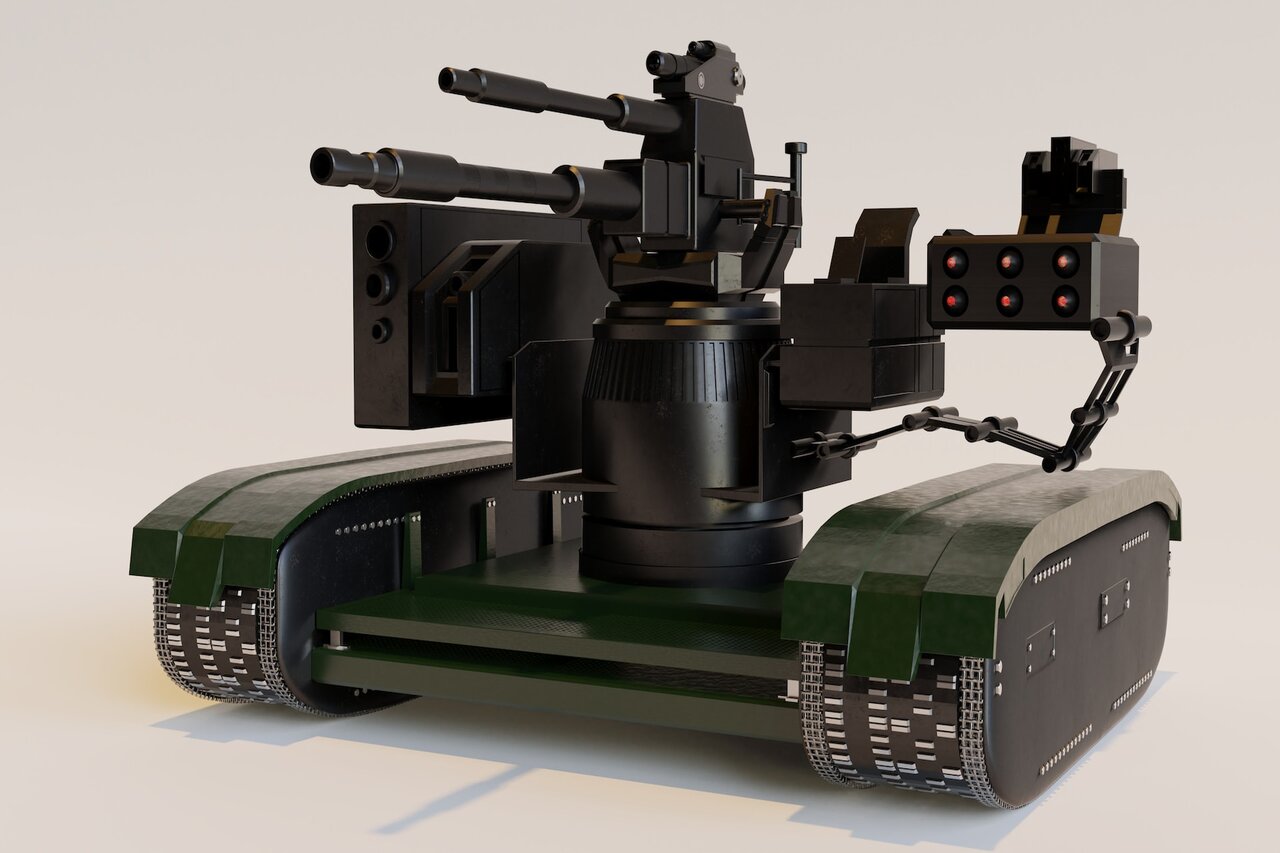As people have ongoing discussions about military technology advancements, they frequently go into in-depth conversations about lethal autonomous weapons (LAWs). This is understandably a hot topic, and that will almost certainly continue to be true for the foreseeable future. Let’s explore a detailed breakdown of lethal autonomous weapons’ pros and cons now.
Pro: Robots Don’t Get Tired Like Humans Can
Even though soldiers undergo rigorous training to prepare them for the battlefield, they can still become fatigued. Their job is mentally and physically taxing, and it’s understandable if they’re not in top condition for every second of the day.
However, robots don’t get tired. Similarly, a machine won’t get stressed or distracted. Both of those things could cause a soldier to make potentially fatal mistakes while putting themselves or others at risk. That doesn’t mean a robotic weapon will perform perfectly all the time.
It still requires humans to program it, and unexpected things can happen when using any technology. However, many people assert that having LAWs that can operate at any time of the day or night and for long periods is a definite advantage.
Con: Few Regulations for Autonomous Weapons
An emerging problem about the use of LAWs relates to the limited regulation surrounding how people can use them. Several world powers have heavily invested in research and development for lethal autonomous weapons. Pros and cons are undoubtedly studied before major decision-making occurs. But, even so, research indicates people put little effort into the regulations surrounding potential applications.
A Northwestern University team confirmed the lack of oversight or regulation for the development of autonomous weapons. They also mentioned there’s even less public discourse about the matter.
In the United States, the Department of Defense recently updated its directive for autonomous weapons systems. It refers to “appropriate levels of human judgment. Analysts say that reflects the reality that this technology may not have people controlling it.
Indeed, partially automated systems are now well-established in the military. They usually involve someone sitting far away from the most dangerous areas and using remote controls to operate a robot. However, the newest LAWs choose their targets and independently act on them according to their programming. That scenario illustrates how we’re truly venturing somewhere new with these machines.
Pro: Lethal Autonomous Weapons May Be More Precise
Many who advocate for using LAWs say these high-tech machines can reduce accidents because they’re more precise with their targeting capabilities. That could be critical when engaging in warfare in areas where many civilians live.
It could also help when military decision-makers want to target residential areas, such as focusing on a known adversary’s home. If a LAW has enough precision, it could damage only that residence while leaving the surrounding buildings undisturbed. The military already uses smart technology to improve threat identification. Using lethal autonomous robots could let them do something similar when narrowing down targets.
Con: Widespread Fear About Lethal Autonomous Weapons
People tend to be afraid of things they don’t understand. As conversations about lethal autonomous weapons’ pros and cons continue, fear is often a major stumbling block. Concerned individuals rightfully point out that these machines may have many unintended consequences. That’s problematic when civilian lives are at stake. Soldiers accept all the uncertainties of war, knowing they could end up severely injured or worse.
However, it’s a different story when everyday people find themselves in war zones due to circumstances outside their control. Such conditions are dangerous, but they could become even more so if killer robots get successfully targeted by hackers or otherwise perform unexpectedly.
The United States Army is aware of people’s fear, and they’re examining ways to help individuals feel more at ease. Some possibilities include having the robots certified as safe or subjecting them to more rigorous testing before use.
Even so, it’s worth pointing out that these machines will receive more scrutiny for a while because the public wants proof that the military can and will use them safely.
Pro: Possible Relief for the Military Shortage
Although it’s not the case everywhere, people in the United States volunteer to join the military. Signing up comes with perks, though. Many individuals take this path because they want help paying for their college educations. Some see the enlistment bonuses and pay as options for creating a more secure financial future.
However, 2023 was one of the worst recruiting years for the U.S. military since 1973. Analysts blamed various things for the slump, including the competitive job market and people being less interested in or qualified for military service.
Lethal autonomous robots can’t close the entire labor gap. But they could help ease some of the strain. Even military applications that are not fully autonomous are beneficial because they greatly reduce the personnel needed to run or supervise those applications.
Con: High Costs
Military personnel and equipment are expensive, any way you look at it. However, lethal autonomous weapons could raise the costs. Pros and cons for the expenses exist, however. Some people assert that, as these robots become more common and production methods improve, the machines will become more affordable. They’re still quite costly for now.
Consider that the U.S. Department of Defense’s fiscal budget request for 2024 asks for $1.8 billion spent on artificial intelligence. Granted, that amount is for more than lethal autonomous robots. But it’s still easy to imagine how costly these machines could become.
One aspect is that the military has decades of experience regarding how much it costs to train, feed and cover the medical expenses of its soldiers. However, developing killer robots is still a relatively new exercise. There are the expenses of turning concepts into realities, which could include contracting various companies to help.
Then, once the lethal autonomous weapons are operational, the military will need to spend money on replacement parts and people to service the machines when they get damaged or break down.
It’s still too early to say whether the costs of robots will balance out and become about the same as what it costs to have human soldiers. However, the uses of robotic machines elsewhere have already raised alarm. For example, the U.S. government has begun using robot dogs to patrol the Mexican border. However, Vicki Gaubeca, director of the Southern Border Communities Coalition, sees the move as an extreme misuse of taxpayer funds that could put people at risk.
Lethal Autonomous Weapons: Pros and Cons to Inform the Debate
Lethal autonomous weapons are like almost everything else. More specifically, people can recognize their advantages. But they also notice the potential downsides. Since those negative aspects concern machines that can kill people, they deserve particular attention now and into the future.
Use these pros and cons to feel more confident when discussing this topic with people you know. No one has all the answers, but it’s great to at least know some of the highlights, and dig deeper into them later if desired.
Recent Stories
Follow Us On
Get the latest tech stories and news in seconds!
Sign up for our newsletter below to receive updates about technology trends




